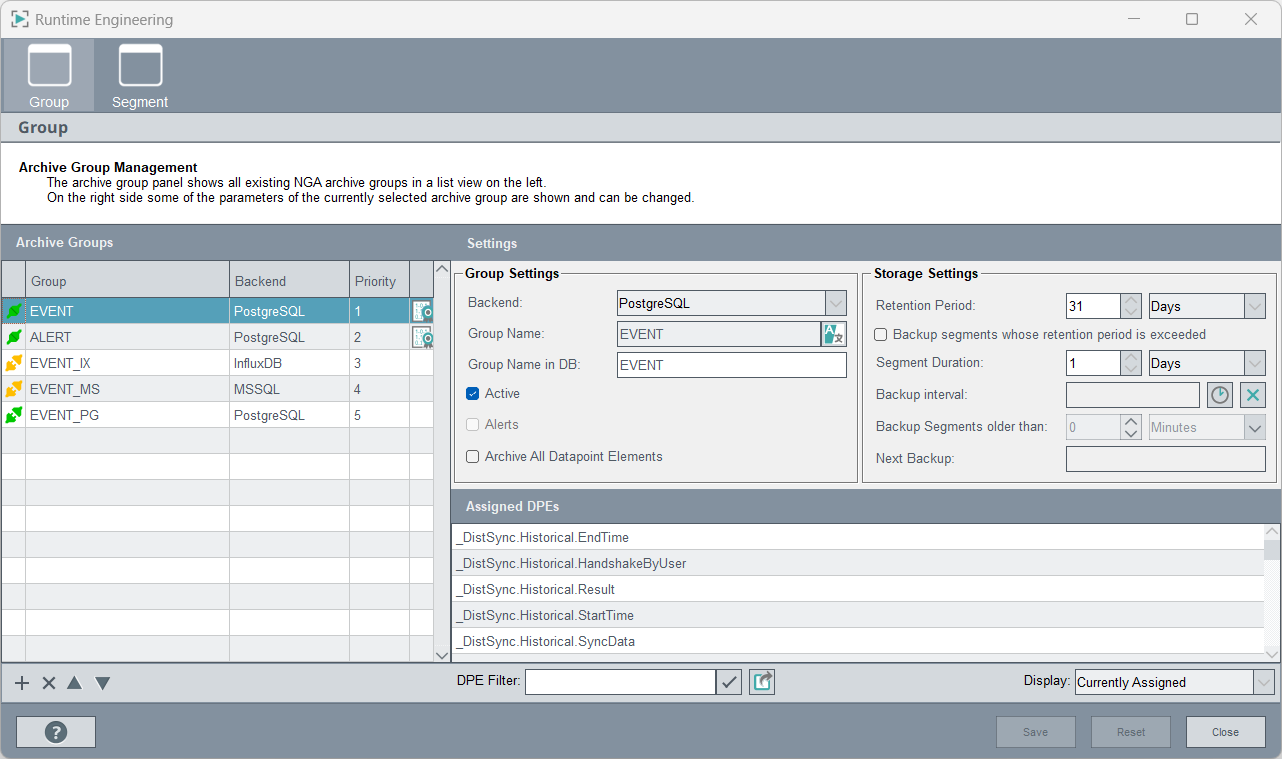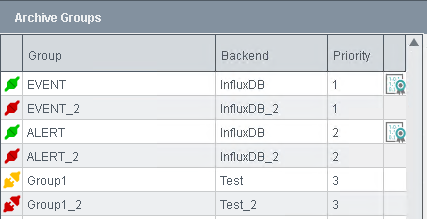Archive Groups
To edit the values, open the Runtime Engineering panel via
The archive group tab of the Runtime Engineering panel shows all existing NGA archive groups in a list view on the left. On the right side the parameters of the currently selected archive group are shown.
The check box Active is used to activate the archive group. When not activated, the archive group does not process any write or read requests and data for this archive group will not be buffered. This setting can be used to switch off archiving for all data point elements assigned to this archive group.

By default the following archive groups exist:
- EVENT - (PostgreSQL®),
- EVENT_PG (PostgreSQL®),
- EVENT_IX (InfluxDB®),
- EVENT_MS (MS SQL®),
- ALERT (PostgreSQL®).
You can add additional ones or remove them (only if not assigned to any DP element) by using the "+" and "x" buttons below the group list and also change the settings of the existing ones on the right.
PostgreSQL® is the default database. You can also use InfluxDB® and MS SQL®. With the Standard license you can create up to 7 archive groups (6 EVENT groups and 1 ALERT group). The one ALERT group and one EVENT group are available by default).
A priority can be specified for a group. The priority can be an arbitrary integer.
Using the arrows in the toolbar on the left, the order of the groups can be changed.
Depending on the selection for “Currently Assigned” / “In Database”, either all elements currently assigned in WinCC OA or all elements found in the archive group in the database will be shown. Normally these two are identical but when a DPE was not written yet, it will not be shown if “In Database” is selected.
The keyword "ARCHIVENUM" can be used for queries. Thereby you can specify the "priority" of an archive group (for "Priority, see the figure below). The query is then only sent to this group. If the priority is specified, the query includes historical data from archive groups whose priority matches the priority of the ARCHIVENUM.


The symbol on the right  shows if a backend or
archive groups are licensed or not:
shows if a backend or
archive groups are licensed or not:
- If the frontend (NextGen Archiver manager) is not running (the state of the backend or the archive group is red, meaning not running), the license icon is not shown.
- If a backend is not active, the license symbol is not shown.
- If an archive group is not active or the associated backend is not active, the
license symbol is not shown.
Note: When you save an active group, the system checks if a license is available. If a free license is not found, a warning is shown and the group is saved as non-active.


